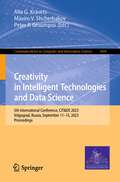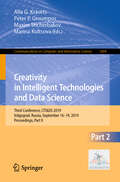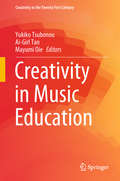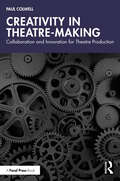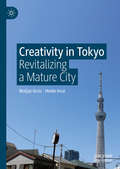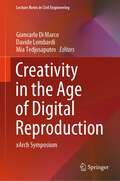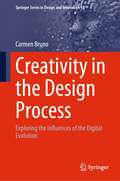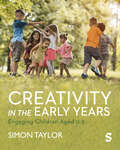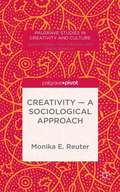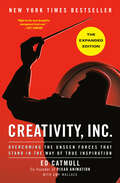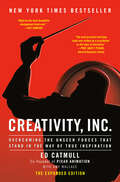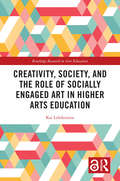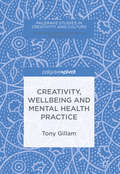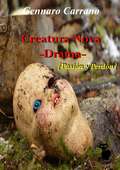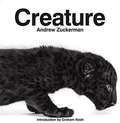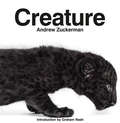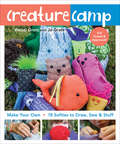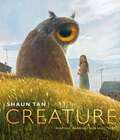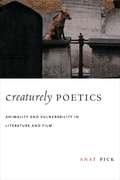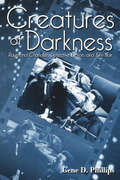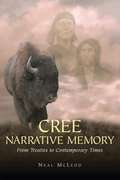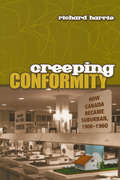- Table View
- List View
Creativity in Intelligent Technologies and Data Science: 5th International Conference, CIT&DS 2023, Volgograd, Russia, September 11–15, 2023, Proceedings (Communications in Computer and Information Science #1909)
by Alla G. Kravets Peter P. Groumpos Maxim V. ShcherbakovThis book constitutes the proceedings of the 5th Conference on Creativity in Intellectual Technologies and Data Science, CIT&DS 2023, held in Volgograd, Russia, in September 2023.The 40 regular papers and 2 keynote papers presented were carefully reviewed and selected from 148 submissions. The papers are organized in the following topical sections: Artificial intelligence and deep learning technologies for creative tasks. Knowledge discovery in patent and open sources; Artificial intelligence & Deep Learning Technologies for Creative tasks. Open science semantic technologies; Artificial intelligence and deep learning technologies for creative tasks. Computer vision and knowledge-based control; Cyber-physical systems and big data-driven control: pro-active modeling in intelligent decision making support; Cyber-Physical Systems & Big Data-driven world. Industrial creativity in CASE/CAI/CAD/PDM; Cyber-Physical Systems & Big Data-driven world. Intelligent Internet of Services and Internet of Things; Intelligent Technologies in Social Engineering. Data Science in Social Networks Analysis and Cyber Security; Intelligent Technologies in Social Engineering. Creativity & Game-Based Learning; Intelligent Technologies in Social Engineering. Intelligent Technologies in Medicine& Healthcare; Intelligent Technologies in Social Engineering. Intelligent technologies in Urban Design&Computing.
Creativity in Intelligent Technologies and Data Science: Third Conference, CIT&DS 2019, Volgograd, Russia, September 16–19, 2019, Proceedings, Part II (Communications in Computer and Information Science #1084)
by Maxim Shcherbakov Marina Kultsova Alla G. Kravets Peter P. GroumposThis two-volume set constitutes the proceedings of the Third Conference on Creativity in Intellectual Technologies and Data Science, CIT&DS 2019, held in Volgograd, Russia, in September 2019.The 67 full papers, 1 short paper and 3 keynote papers presented were carefully reviewed and selected from 231 submissions. The papers are organized in topical sections in the two volumes. Part I: cyber-physical systems and Big Data-driven world. Part II: artificial intelligence and deep learning technologies for creative tasks; intelligent technologies in social engineering.
Creativity in Music Education (Creativity In The Twenty First Century Ser.)
by Ai-Girl Tan Yukiko Tsubonou Mayumi OieThis book creates a platform for music educators to share their experience and expertise in creative music teaching and learning with the international community. It presents research studies and practices that are original and representative of music education in the Japanese, Asian and international communities. It also collects substantial literature on music education research in Japan and other Asian societies, enabling English-speaking readers to access excellent research and practical experiences in non-English societies.
Creativity in Theatre-Making: Collaboration and Innovation for Theatre Production
by Paul ColwellCreativity in Theatre-Making identifies and explores relationships between theatremakers. The book seeks to expand opportunities for creativity and collaboration from concept to realisation. It does so by reconsidering the so-called ‘technical roles’ as ‘creators’, thereby dismantling the conventional distinction between creative and technical teams. The book challenges this limited views of creativity, offers an alternative model of relationships – a heterarchy – and uses this to underpin a range of techniques and strategies that improve the productivity, well-being, and inclusivity of professional theatre practice. Its core pedagogic principle is that understanding ‘why’ is more useful than simply knowing ‘what’. The book includes an overview of all the major specialist meetings and roles in theatre-making; as well as an in-depth exploration of the key resources used to create Shows and how these can be utilised collaboratively and sustainably. There is also advice on giving and receiving effective feedback during the production process and engaging with creative, financial and safety risks. Throughout the text, the author defines the specialist terminology being used, and offers real-world examples. Creativity in Theatre-Making is for undergraduate and postgraduate students studying for a creative and/or ‘technical’ role in the theatre industry and related sectors, as well as early- and mid-career theatre professionals looking to appraise or refresh their practice.
Creativity in Tokyo: Revitalizing a Mature City
by Heide Imai Matjaz UrsicThis book focuses on overlooked contextual factors that constitute the urban creative climate or innovative urban milieu in contemporary cities. Filled with reflections based on interviews with a diverse range of creative actors in various local neighborhoods in Tokyo, it offers a rare glimpse into the complex set of elements that provide long-term, physical, and sociocultural support to urban creativity. Ursic and Imai highlight the interplay between physical and soft (social) factors in the process of place-making and explore how a city’s creativity is influenced by financial support and accessible infrastructure, as well as the sets of informal networks, services, and tacit, locally embedded knowledge that provide the basic layers of stimuli needed for creativity to fully develop. The authors show how the future development of creativity and the overall development of a city depend not only on the (top-down) planning strategies of formal authorities, but also on the appropriate (bottom-up) inclusion of heterogeneous elements that are provided and embedded within the small, hidden context of city spaces.
Creativity in the Age of Digital Reproduction: xArch Symposium (Lecture Notes in Civil Engineering #343)
by Davide Lombardi Giancarlo Di Marco Mia TedjosaputroInspired by this symposium we would like to rethink and provide an insight about the use of new technologies in architecture and design. The consideration spans over (but not limited to) computational design, virtual experience, digital fabrication, artificial intelligence and sustainability/environment. Readers of the proceedings will benefit from discussions on how adoption of new technologies can benefit the Construction Industry rather than just for the sake of leveraging new technologies. The book targets scholars and high-education level students, as well as Ph.D.s which research falls into the broad realm of digital design.
Creativity in the Design Process: Exploring the Influences of the Digital Evolution (Springer Series in Design and Innovation #18)
by Carmen BrunoThe book provides an open and integrated view of creativity in the 21st century, merging theories and case studies from design, psychology, sociology, computer science and human-computer interaction, while benefitting from a continuous dialogue within a network of experts in these fields. An exploratory journey guides the reader through the major social, human, and technological changes that influence human creative abilities, highlighting the fundamental factors that need to be stimulated for creative empowerment in the digital era. The book reflects on why and how design practice and design research should explore digital creativity, and promote the empowerment of creativity, presenting two flexible tools specifically developed to observe the influences on multiple level of human creativity in the digital transition, and understand their positive and negative effect on the creative design process. An overview of the main influences and opportunities collected by adopting the two tools are presented with guidelines to design actions to empower the process for innovation.
Creativity in the Early Years: Engaging Children Aged 0-5
by Simon TaylorThis book offers an accessible and comprehensive new introduction to the subject and practise of creativity in early years education. Taylor takes a uniquely rights-based and inclusive approach to creativity, providing students with a holistic, internationally-minded overview of creativity and its place both inside and outside the classroom. Sections focus on: Defining creativity and its benefits Different modes of creativity Creativity in a policy and social context Creative pedagogy in practice Creative leadership Each chapter offers questions for critical reflection, illustrative contemporary case studies, and ample suggestions for further reading.
Creativity in the Early Years: Engaging Children Aged 0-5
by Simon TaylorThis book offers an accessible and comprehensive new introduction to the subject and practise of creativity in early years education. Taylor takes a uniquely rights-based and inclusive approach to creativity, providing students with a holistic, internationally-minded overview of creativity and its place both inside and outside the classroom. Sections focus on: Defining creativity and its benefits Different modes of creativity Creativity in a policy and social context Creative pedagogy in practice Creative leadership Each chapter offers questions for critical reflection, illustrative contemporary case studies, and ample suggestions for further reading.
Creativity – A Sociological Approach
by Monika E. Reuter Hao TanIntroducing the first macro-sociological perspective on the concept of creativity this book includes a review of ten domains which have studied creativity. It also explores the results of a six-year on-going research project comparing students' ideas on creativity with employers' and industry professionals' views.
Creativity, Inc. (The Expanded Edition): Overcoming the Unseen Forces That Stand in the Way of True Inspiration
by Amy Wallace Ed CatmullThe co-founder and longtime president of Pixar updates and expands his 2014 New York Times bestseller on creative leadership, reflecting on the management principles that built Pixar&’s singularly successful culture, and on all he learned during the past nine years that allowed Pixar to retain its creative culture while continuing to evolve.&“Might be the most thoughtful management book ever.&”—Fast Company For nearly thirty years, Pixar has dominated the world of animation, producing such beloved films as the Toy Story trilogy, Finding Nemo, The Incredibles, Up, and WALL-E, which have gone on to set box-office records and garner eighteen Academy Awards. The joyous storytelling, the inventive plots, the emotional authenticity: In some ways, Pixar movies are an object lesson in what creativity really is. Here, Catmull reveals the ideals and techniques that have made Pixar so widely admired—and so profitable. As a young man, Ed Catmull had a dream: to make the first computer-animated movie. He nurtured that dream as a Ph.D. student, and then forged a partnership with George Lucas that led, indirectly, to his founding Pixar with Steve Jobs and John Lasseter in 1986. Nine years later, Toy Story was released, changing animation forever. The essential ingredient in that movie&’s success—and in the twenty-five movies that followed—was the unique environment that Catmull and his colleagues built at Pixar, based on philosophies that protect the creative process and defy convention, such as:• Give a good idea to a mediocre team and they will screw it up. But give a mediocre idea to a great team and they will either fix it or come up with something better.• It&’s not the manager&’s job to prevent risks. It&’s the manager&’s job to make it safe for others to take them.• The cost of preventing errors is often far greater than the cost of fixing them.• A company&’s communication structure should not mirror its organizational structure. Everybody should be able to talk to anybody.Creativity, Inc. has been significantly expanded to illuminate the continuing development of the unique culture at Pixar. It features a new introduction, two entirely new chapters, four new chapter postscripts, and changes and updates throughout. Pursuing excellence isn&’t a one-off assignment but an ongoing, day-in, day-out, full-time job. And Creativity, Inc. explores how it is done.
Creativity, Inc.: Overcoming the Unseen Forces That Stand in the Way of True Inspiration
by Amy Wallace Ed CatmullCreativity, Inc. is a book for managers who want to lead their employees to new heights, a manual for anyone who strives for originality, and the first-ever, all-access trip into the nerve center of Pixar Animation—into the meetings, postmortems, and “Braintrust” sessions where some of the most successful films in history are made. It is, at heart, a book about how to build a creative culture—but it is also, as Pixar co-founder and president Ed Catmull writes, “an expression of the ideas that I believe make the best in us possible.”<P><P> For nearly twenty years, Pixar has dominated the world of animation, producing such beloved films as the Toy Story trilogy, Monsters, Inc., Finding Nemo, The Incredibles, Up, and WALL-E, which have gone on to set box-office records and garner thirty Academy Awards. The joyousness of the storytelling, the inventive plots, the emotional authenticity: In some ways, Pixar movies are an object lesson in what creativity really is. Here, in this book, Catmull reveals the ideals and techniques that have made Pixar so widely admired—and so profitable.<P> As a young man, Ed Catmull had a dream: to make the first computer-animated movie. He nurtured that dream as a Ph.D. student at the University of Utah, where many computer science pioneers got their start, and then forged a partnership with George Lucas that led, indirectly, to his founding Pixar with Steve Jobs and John Lasseter in 1986. Nine years later, Toy Story was released, changing animation forever. The essential ingredient in that movie’s success—and in the thirteen movies that followed—was the unique environment that Catmull and his colleagues built at Pixar, based on philosophies that protect the creative process and defy convention, such as:<P> * Give a good idea to a mediocre team, and they will screw it up. But give a mediocre idea to a great team, and they will either fix it or come up with something better.<P> * If you don’t strive to uncover what is unseen and understand its nature, you will be ill prepared to lead. <P> * It’s not the manager’s job to prevent risks. It’s the manager’s job to make it safe for others to take them.<P> * The cost of preventing errors is often far greater than the cost of fixing them. <P> * A company’s communication structure should not mirror its organizational structure. Everybody should be able to talk to anybody.<P> Chosen for Mark Zuckerberg's "A Year of Books"
Creativity, Inc.: Overcoming the Unseen Forces That Stand in the Way of True Inspiration
by Amy Wallace Ed CatmullFrom Ed Catmull, co-founder (with Steve Jobs and John Lasseter) of Pixar Animation Studios, comes an incisive book about creativity in business—sure to appeal to readers of Daniel Pink, Tom Peters, and Chip and Dan Heath.Creativity, Inc. is a book for managers who want to lead their employees to new heights, a manual for anyone who strives for originality, and the first-ever, all-access trip into the nerve center of Pixar Animation—into the meetings, postmortems, and &“Braintrust&” sessions where some of the most successful films in history are made. It is, at heart, a book about how to build a creative culture—but it is also, as Pixar co-founder and president Ed Catmull writes, &“an expression of the ideas that I believe make the best in us possible.&”For nearly twenty years, Pixar has dominated the world of animation, producing such beloved films as the Toy Story trilogy, Monsters, Inc., Finding Nemo, The Incredibles, Up, and WALL-E, which have gone on to set box-office records and garner thirty Academy Awards. The joyousness of the storytelling, the inventive plots, the emotional authenticity: In some ways, Pixar movies are an object lesson in what creativity really is. Here, in this book, Catmull reveals the ideals and techniques that have made Pixar so widely admired—and so profitable.As a young man, Ed Catmull had a dream: to make the first computer-animated movie. He nurtured that dream as a Ph.D. student at the University of Utah, where many computer science pioneers got their start, and then forged a partnership with George Lucas that led, indirectly, to his founding Pixar with Steve Jobs and John Lasseter in 1986. Nine years later, Toy Story was released, changing animation forever. The essential ingredient in that movie&’s success—and in the thirteen movies that followed—was the unique environment that Catmull and his colleagues built at Pixar, based on philosophies that protect the creative process and defy convention, such as:• Give a good idea to a mediocre team, and they will screw it up. But give a mediocre idea to a great team, and they will either fix it or come up with something better.• If you don&’t strive to uncover what is unseen and understand its nature, you will be ill prepared to lead. • It&’s not the manager&’s job to prevent risks. It&’s the manager&’s job to make it safe for others to take them.• The cost of preventing errors is often far greater than the cost of fixing them. • A company&’s communication structure should not mirror its organizational structure. Everybody should be able to talk to anybody.• Do not assume that general agreement will lead to change—it takes substantial energy to move a group, even when all are on board.
Creativity, Society, and the Role of Socially Engaged Art in Higher Arts Education (Routledge Research in Arts Education)
by Kai LehikoinenThis interdisciplinary book explores socially engaged art as a subject of study and its relevance in higher arts education institutions' third mission—giving back to society and engaging with the community—to build a sustainable higher arts education for the future.Drawing on data from two large-scale EU-funded projects—supplemented by interviews, educational document analysis, and secondary data—this book explores emerging trends in the arts sector and the role of arts universities in cross-sector collaboration, innovation, and actions towards social and environmental responsibility. Chapters posit theoretical analysis, case studies and practically orientated examples from countries including the United States, Ghana, Indonesia, and from across Europe to explore the growing demands for the positive societal impact of higher arts education. Located at the interface between the sociology of higher arts education and community engagement, the book explores a richness of international contexts including activism, churches, refugee work, eldercare, gender politics, prisons and many others.This timely volume responds to the urgent need to investigate the full potential of socially engaged art in higher arts education. As such, it will appeal foremost to scholars, researchers, postgraduate students, and teachers in higher arts education and the sociology of education. Practitioners working in arts curriculum design, university-society partnerships, and those focused on creating inclusive and respectful spaces in higher arts education and research, will also find the volume of use.
Creativity, Wellbeing and Mental Health Practice (Palgrave Studies in Creativity and Culture)
by Tony GillamThis book argues that some aspects of mental health practice have become mechanical, joyless and uninspiring, leading to a loss of creativity and wellbeing. A high level of wellbeing is essential to mental health and contemporary mental health care – and creativity is at the heart of this. A greater awareness of everyday creativity, the arts and creative approaches to mental health practice, learning and leadership can help us reinvent and reinvigorate mental health care. This, combined with a clearer understanding of the complex concept of wellbeing, can enable practitioners to adopt fresh perspectives and roles that can enrich their work. Creativity and wellbeing are fundamental to reducing occupational stress and promoting professional satisfaction. Introducing a new model of creative mental health care combined with recommendations for wellbeing, Creativity, Wellbeing and Mental Health Practice is a practical, evidence-based book for students, practitioners and researchers in mental health nursing and related disciplines.
Creatura Nova: Pasión y perdón
by Gennaro CarranoAtemporal drama en el que autor Gennaro Carrano nos muestra los polos opuestos del ser humano: la extrema maldad y la bondad absoluta y cuyo final soprenderá al lector por la crudeza de los hechos. La historia proviene de una época lejana y de un lugar que bien podría estar más cercano de lo que imaginamos. Dos hombres nos la traen, tan distantes entre sí como el tiempo y el lugar del mismo. Felice, poeta de la alta sociedad y Valerio, un hombre sencillo. El impulso de contarla surge de un sentimiento vacilante, el deseo de comunicar la deriva de sentimientos ignorados y el impulso de deshacerse de una pesada carga. Dos hermanos son los protagonistas de la historia: Verginia y Adelfo. La miseria, la soledad, la ignorancia, la ira y la frustración pueden ser una mezcla explosiva para cualquier hombre que no esté acostumbrado a verse por dentro.
Creature
by Andrew ZuckermanPhotographer Andrew Zuckerman's strikingly detailed images of animals from around the world are as delightful as they are inspiring. This collection of astonishing studio portraits of 175 wild creatures--from baby leopards to parrots, bears, mandrills, and many more--are stunningly foregrounded against white backgrounds, depicting their subjects with rare sensitivity, insight, humor, and wonder. Zuckerman--also an up-and-coming filmmaker, whose first short film, High Falls, premiered at the Sundance Film Festival in 2007--has created a volume perfect for animal lovers, photography fans, and anyone fascinated by the world around us. Creature is a beautiful and thought-provoking look at the fragile wonders of the natural world.
Creature
by Andrew ZuckermanPhotographer Andrew Zuckerman's strikingly detailed images of animals from around the world are as delightful as they are inspiring. This collection of astonishing studio portraits of 175 wild creatures—from baby leopards to parrots, bears, mandrills, and many more—are stunningly foregrounded against white backgrounds, depicting their subjects with rare sensitivity, insight, humor, and wonder. Zuckerman—also an up-and-coming filmmaker, whose first short film, High Falls, premiered at the Sundance Film Festival in 2007—has created a volume perfect for animal lovers, photography fans, and anyone fascinated by the world around us. Creature is a beautiful and thought-provoking look at the fragile wonders of the natural world. Plus, this is the fixed format version, which includes beautiful high-resolution images.
Creature Camp: Make Your Own • 18 Softies to Draw, Sew & Stuff
by Wendi Gratz Jo GratzBy a mother and daughter duo: &“a bit of a &‘learn to sew&’ book for children . . . provide[s] ample inspiration without intimidation for young crafters&” (Publishers Weekly). This collection of 18 skill-building projects teaches children with no sewing experience how to sew their very own cuddly pals. From sewing on buttons to putting in zippers, this guide walks kids step-by-step through various skill levels. They will learn to embroider, turn corners, and make curves with these fun designs. Multiple examples of each project encourage them to explore ideas. Featuring shapes, critters, and monsters that appeal to kids&’ imagination, the projects build on skills and develop creativity. &“Written for children by Wendi and her daughter Jo . . . a book of sewing basics focusing on creating fun stuffed creatures, and it&’s suitable for new or experienced sewists ages 9 and up. It&’s kid-tested and approved, because all of the sewing was done by 11-year-old Jo and her friends . . . With Christmas coming, I can&’t think of a more perfect book for kids and grown-ups alike. There is just so much cuteness that needs to be stitched and gifted!&”—Wild Olive Blog
Creature Features: Draw Amazing Monsters & Aliens
by Randy MartinezPrepare to scare . . .Open this book, grab a pen, and give life to the monsters that lurk in your imagination. Creature Features shows you how to draw all things creepy, slimy and fantastical. More than 40 step-by-step demonstrations take you from start to finish as you master techniques for drawing the scariest beings on the planet and beyond, including dragons, zombies, vampires, aliens, demons, werewolves and many more.Author Randy Martinez takes a no-fear approach to drawing. As an officially licensed artist for Lucasfilm, Ltd., he's mastered the art of drawing full-color images of some of your most favorite creatures from popular comics and films. Taking it one step at a time, you'll be drawing like a pro right down to the last detail—from evil eyes and terrifying teeth to pointy nails and sharp scales.With Creature Features, being freaky has never been more fun. Get in touch with your dark side, and get drawing today!
Creature: Paintings, Drawings, And Reflections
by Shaun TanFrom the creator of THE ARRIVAL, a collection of essays illuminating his thoughts and advice for writers and artists, young and old.Shaun Tan is one of the world's most highly acclaimed narrative artists—his stories and images are loved by countless young and not-so-young readers around the world. Drawing upon 25 years as a picture book and comics creator, painter, and filmmaker, CREATURE explores the central obsession of this visionary artist, from casual doodles to studied oil-paintings. Beyond sketches for acclaimed works such as THE ARRIVAL, THE LOST THING, and TALES FROM OUTER SUBURBIA, this volume collects together for the first time unseen and stand-alone illustrations, each resonant with unwritten tales of their own. Detailed commentary by the artist offers an entertaining insight into the endless allure of imaginary, non-human beings and what they might tell us about our so-called "normal" human selves. Artists, writers, students, dreamers, and anyone interested in the deeper undercurrents of creativity, myth, and visual metaphor will find inspiration in these pages.
Creaturely Poetics: Animality and Vulnerability in Literature and Film
by Anat PickSimone Weil once wrote that "the vulnerability of precious things is beautiful because vulnerability is a mark of existence," establishing a relationship between vulnerability, beauty, and existence transcending the separation of species. Her conception of a radical ethics and aesthetics could be characterized as a new poetics of species, forcing a rethinking of the body's significance, both human and animal. Exploring the "logic of flesh" and the use of the body to mark species identity, Anat Pick reimagines a poetics that begins with the vulnerability of bodies, not the omnipotence of thought. Pick proposes a "creaturely" approach based on the shared embodiedness of humans and animals and a postsecular perspective on human-animal relations. She turns to literature, film, and other cultural texts, challenging the familiar inventory of the human: consciousness, language, morality, and dignity. Reintroducing Weil's elaboration of such themes as witnessing, commemoration, and collective memory, Pick identifies the animal within all humans, emphasizing the corporeal and its issues of power and freedom. In her poetics of the creaturely, powerlessness is the point at which aesthetic and ethical thinking must begin.
Creatures of Darkness: Raymond Chandler, Detective Fiction, and Film Noir
by Gene D. Phillips“[An] exhaustively researched survey of Raymond Chandler’s thorny relationship with Hollywood during the classic period of film noir.” —Alain Silver, film producer and authorRaymond Chandler’s seven novels, including The Big Sleep (1939) and The Long Goodbye (1953), with their pessimism and grim realism, had a direct influence on the emergence of film noir. Chandler worked to give his crime novels the flavor of his adopted city, Los Angeles, which was still something of a frontier town, rife with corruption and lawlessness. In addition to novels, Chandler wrote short stories and penned the screenplays for several films, including Double Indemnity (1944) and Strangers on a Train (1951). His work with Billy Wilder and Alfred Hitchcock on these projects was fraught with the difficulties of collaboration between established directors and an author who disliked having to edit his writing on demand.Creatures of Darkness is the first major biocritical study of Chandler in twenty years. Gene Phillips explores Chandler’s unpublished script for Lady in the Lake, examines the process of adaptation of the novel Strangers on a Train, discusses the merits of the unproduced screenplay for Playback, and compares Howard Hawks’s director’s cut of The Big Sleep with the version shown in theaters. Through interviews he conducted with Wilder, Hitchcock, Hawks, and Edward Dmytryk over the past several decades, Phillips provides deeper insight into Chandler’s sometimes difficult personality.Chandler’s wisecracking private eye, Philip Marlowe, has spawned a thousand imitations. Creatures of Darkness lucidly explains the author’s dramatic impact on both the literary and cinematic worlds, demonstrating the immeasurable debt that both detective fiction and the neo-noir films of today owe to Chandler’s stark vision.
Cree Narrative Memory: From Treaties To Contemporary Times
by Neal McLeodNeal McLeod examines the history of the nêhiyawak (Cree People) of western Canada from the massive upheavals of the 1870s and the reserve period to the vibrant cultural and political rebirth of contemporary times. Central to the text are the narratives of McLeod's family, which give first hand examples of the tenacity and resiliency of the human spirit while providing a rubric for reinterpreting the history of Indigenous people, drawing on Cree worldviews and Cree narrative structures. <p><p> In a readable style augmented with extensive use of the Cree language throughout, McLeod draws heavily on original research, the methodology of which could serve as a template for those doing similar work. While the book is based on the Cree experience of the Canadian prairies, its message and methodology are applicable to all Indigenous societies.
Creeping Conformity
by Richard HarrisCreeping Conformity, the first history of suburbanization in Canada, provides a geographical perspective - both physical and social - on Canada's suburban past. Shaped by internal and external migration, decentralization of employment, and increased use of the streetcar and then the automobile, the rise of the suburb held great social promise, reflecting the aspirations of Canadian families for more domestic space and home ownership.After 1945 however, the suburbs became stereotyped as generic, physically standardized, and socially conformist places. By 1960, they had grown further away - physically and culturally - from their respective parent cities, and brought unanticipated social and environmental consequences. Government intervention also played a key role, encouraging mortgage indebtedness, amortization, and building and subdivision regulations to become the suburban norm. Suburban homes became less affordable and more standardized, and for the first time, Canadian commentators began to speak disdainfully of 'the suburbs,' or simply 'suburbia.' Creeping Conformity traces how these perceptions emerged to reflect a new suburban reality. Disclaimer: Two images removed at the request of the rights holder.
